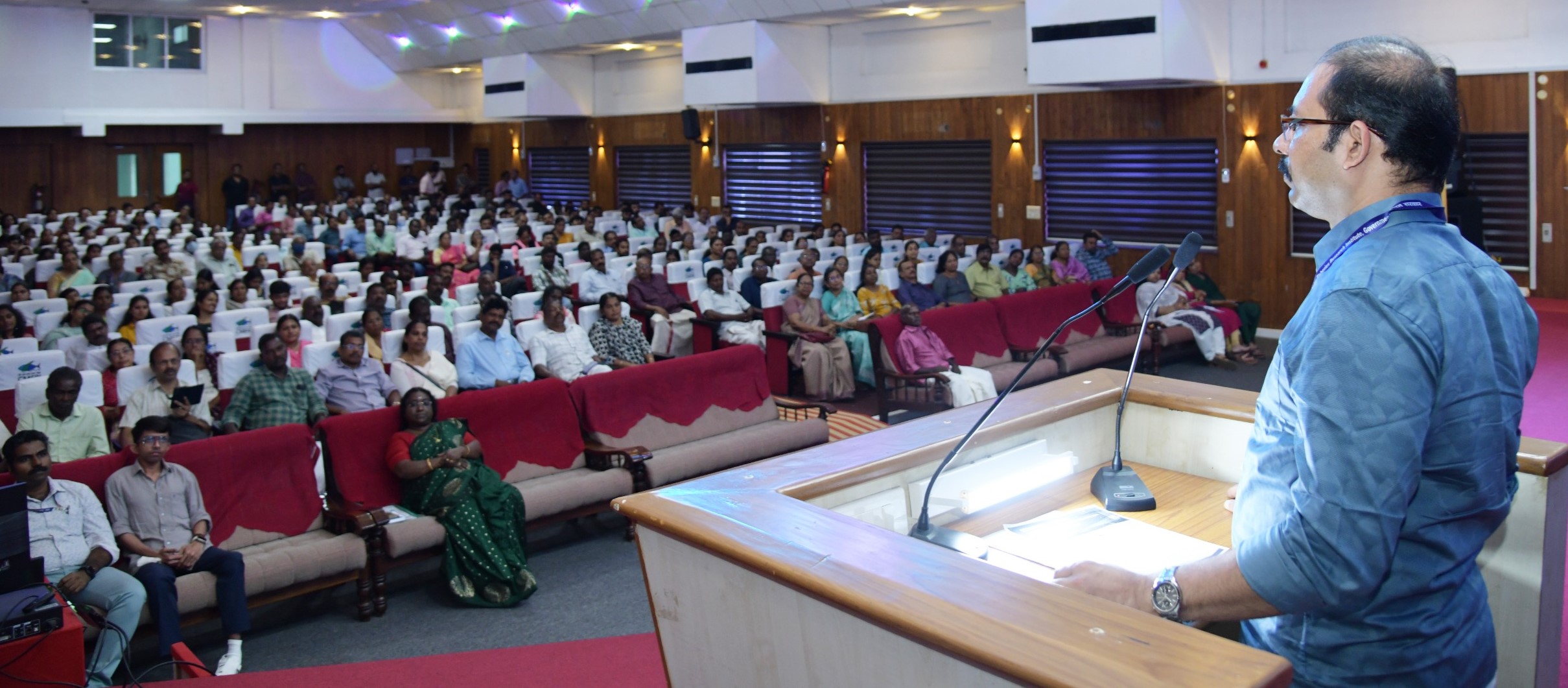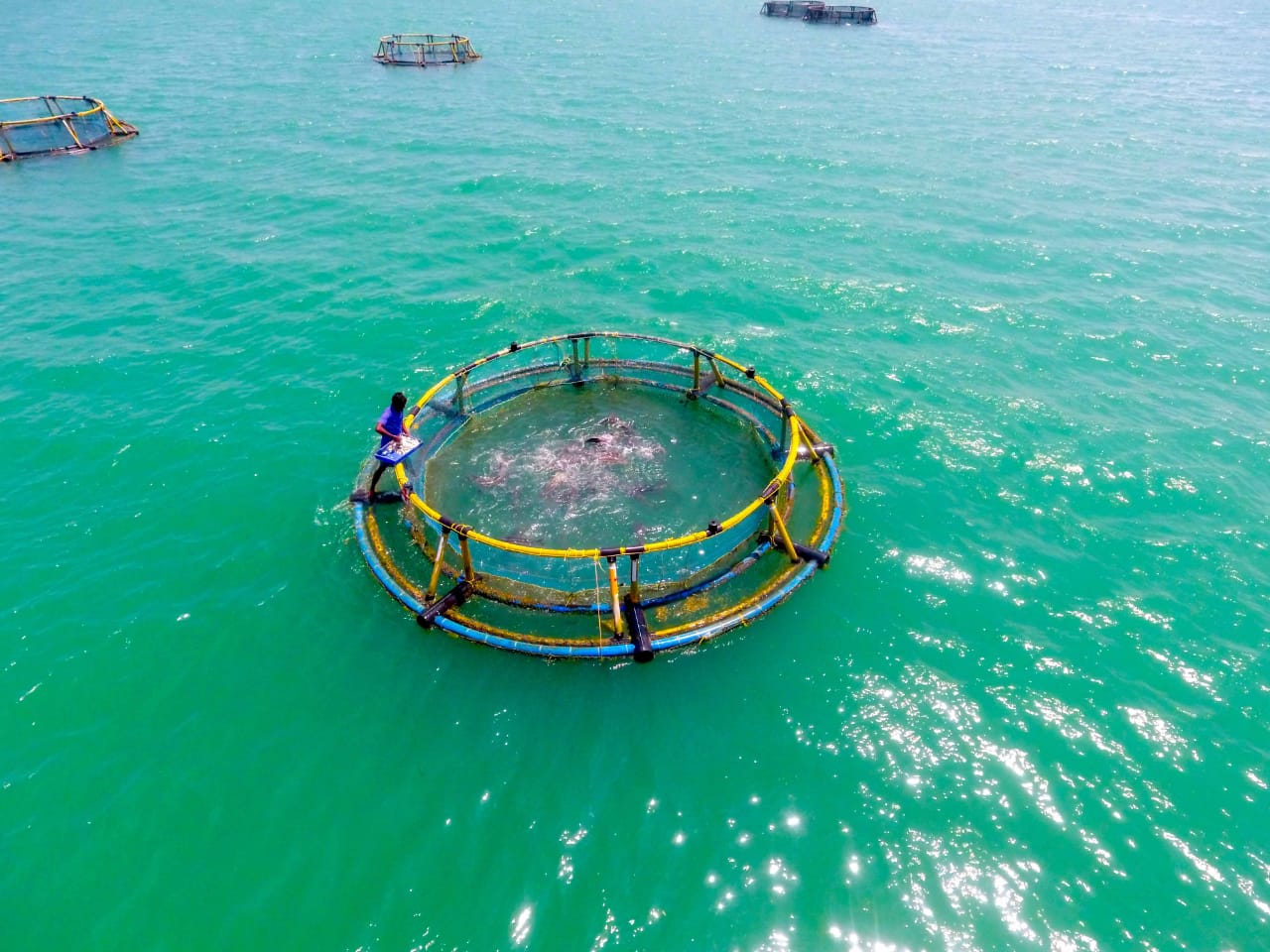Special Service and Features
CMFRI aims to increase mariculture production to 25 lakh tonnes by 2047
‘Mariculture next big thing in India’s marine fisheries sector’
Posted On:
11 OCT 2025 4:36PM by PIB Thiruvananthpuram
Kochi: In order to meet the country’s rapidly growing seafood demand, the ICAR-Central Marine Fisheries Research Institute (CMFRI) has set a target of 2.5 million tonne mariculture production in India by 2047 from the present 1.5 lakh tonnes.
A6WI.jpeg)
CMFRI Director Dr Grinson George distributing fish farming inputs to farmers belonging to the Scheduled Caste and Scheduled Tribe communities during the training programme held at CMFRI on Saturday.
Highlighting that mariculture is the next big thing in India’s marine fisheries sector, CMFRI Director Dr Grinson George said various technologies such as cage culture and Integrated Multi-Trophic Aquaculture (IMTA) could be utilized to increase the marine fish production.
He was speaking after inaugurating a training programme for fish farmers at CMFRI on Saturday marking the nationwide launch of Central Government’s Pradhan Mantri Dhan Dhanya Krishi Yojana (PM DDKY).

CMFRI Director Dr Grinson George inaugurating a training programme for fishers at CMFRI on Saturday.
He pointed out that India currently produces an average 3.5 million tonnes from marine capture fisheries annually. “Due to climate change and resource depletion, the country needs to explore alternative systems such as mariculture to increase marine fish production. To meet the growing seafood demand, at least 25 lakh tonnes of mariculture production is targeted by 2047”, Dr George said.
On CMFRI’s role in increasing marine production, he said that the institute has developed several mariculture technologies suited to Indian conditions, which can substantially enhance productivity and fishermen livelihood opportunities.
CMFRI Director also said that the country has immense potential in seaweed farming, another major component in mariculture. “While the global seaweed production stands at 35.5 million tonnes, India’s production remains very low. At least 5 millionn tonnes of domestic seaweed production could be achieved by the country to meet the growing industrial and nutraceutical demand”, he added.

Representative Image- Cage fish farming
Referring to India’s vast coastline and favourable marine conditions, the CMFRI Director said the country has the natural potential and scientific capability to emerge as a global mariculture hub. “If we adopt modern technologies and develop a strong policy framework, mariculture can transform the economic landscape of coastal India,” he said, adding that a national mariculture policy and supportive legal framework were required to promote sustainable, large-scale investment and systematic growth in this sector.
The training sessions covered a range of aquaculture techniques, including mussel and oyster farming, cage fish culture, pen culture, biofloc technology, and the production of fish feed using black soldier fly larvae. As part of the event, fishing and farming inputs were distributed free of cost to those belonging to the Scheduled Caste and Scheduled Tribe communities. Dr K Madhu, Dr Vidya R, Dr Sanal Ebeneezer and Dr Saju George spoke on the occasion.
******
(Release ID: 2177807)
Visitor Counter : 15